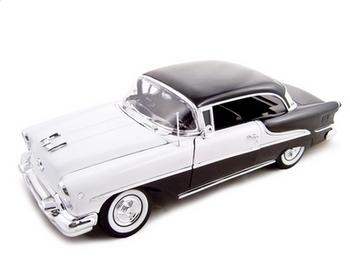Does engineering ethics change with time? – The case of the 1955 Oldsmobile

Owing to circumstances too complex to summarize here, the other weekend I found myself working on the electrical system of a 1955 Oldsmobile Super 88 sedan. The original owner needed help in getting it running again after it had sat unused in a garage for three years. All it needed was a new battery, a set of ignition cables and distributor parts, and a little gasoline poured down the carburetor to give the gas pump a chance to suck new fuel from the gas tank. After a few tries, it started up fine and made all of us very happy, just as it did in 1955 when it became the owner’s first new car.
While working around the vehicle, I was struck by the tremendous differences in design and engineering between what was considered a good, safe, responsible-family-man’s car in 1955, and what would pass muster by today’s standards. The biggest difference is the list of what is missing from the ’55 compared to what you would find in virtually any new car today. That list includes: air bags, computers, shoulder belts, high-impact bumpers, a catalytic converter, numerous other anti-pollution technologies, anti-skid brakes, steel-belted radial tubeless tires, and unibody construction with added side-collision protection. On the other hand, what the ’55 has in abundance that has been greatly reduced in most modern cars is expressed in one word: steel. The main longitudinal members of the chassis under the car look like they’re strong enough to support a skyscraper. The bumpers are thick chrome-plated armorplate that must weigh close to a hundred pounds each. Carry this theme through the whole car, and you have a behemoth that needs a 300-cubic-inch V-8 just to get moving. And of course, the gas mileage (premium only, now that leaded gas is no longer generally available) can’t be much better than 20 mpg.
Because you couldn’t legally market a new car designed like this 1955 specimen today, does that mean that the engineers who designed it then were bad engineers? That they were doing something wrong in foisting such a dangerous vehicle upon the public? Of course not. No one is blamed for not using safety technology that doesn’t yet exist. Today’s air bags, for instance, depend on a micro-electromechanical IC to detect the rapid deceleration of a collision. Anti-skid brakes need computer technology for similar reasons, and such advances were simply not available in 1955. Seat belts, on the other hand, are hardly advanced technology. According to a document on the Ford Motor Company’s website, 1955 was the year Ford became the first U. S. automaker to offer seat belts as an option. But it took decades for car companies to offer seat belts and later air bags as standard equipment. And until states began to pass laws mandating the use of seat belts around 1980, only about one out of ten drivers used them.
There are two morals to this little history lesson. The first one is pretty obvious: standards of what is considered safe and legal design change with time. Laws change as a matter of course, and engineers need to be aware of any changes in laws that affect their firm’s products or services. But always staying just barely legal is not usually the best position for either a company or an individual. The best engineering looks ahead of the present legal environment to combine what new technology offers with desirable features that make products safer as well as better. And if you widen the concept of safety to include broader public goods such as less environmental pollution or less fossil fuel consumed for a given output, the range of potential engineering development grows even wider.
The second moral is related to the first: even if laws and technology change, changes in behavior don’t always follow. It took a combination of public-awareness campaigns and legal sanctions to get most (not all!) drivers to buckle up. Many today would view the emission of leaded-gas fumes from a 20-mpg 1955 vehicle as at least as dangerous as the absence of seat belts. Many cars sold today get no better mileage than this, and the main reason is not technology, but buyer preference.
There is a debate going on today about how we in the U. S. can reduce our dependence on foreign oil imports. Some favor increasing mandatory federal fleet mileage standards, but auto manufacturers have shown how they can “game” that system in the past. Others take the view that as gasoline becomes more expensive, Americans will just naturally start buying more fuel-efficient cars. A third answer is to radically increase the taxes on gasoline to more accurately reflect the “externalities” of driving gas-hog vehicles: the cost of importing oil, the cost military measures to stabilize the Middle East, the hidden costs caused by air pollution, and the highway-construction costs associated with more cars on the roads, period.
While the means vary, the goal is the same: to change the way drivers behave toward driving and cars. And changes in behavior usually come slowly, if at all. But given the right combination of suitable new technology, economic incentives, and what for lack of a better word can be called the cultural factor, people can change the way they behave pretty fast. With most drivers having cell phones, it’s trivially easy to call 911 when you see a road accident, and help can arrive much faster than when someone had to find a pay phone and call the local authorities. If the desire to help others wasn’t there, all the cell phones in the world wouldn’t do any good. But before it was so easy, the Good Samaritan who would undertake either to drive for help or to stop and render aid was not that common.
That sort of thing was probably not in the minds of cell-phone designers, but it is an unexpected benefit. Engineers can intentionally look for such benefits and design them into new projects, but only if they take a wider view of the ways their work will be used and consider the human factors as well as the purely technical ones.
We still haven’t taken the ’55 Olds out on the road. The brakes need a little work yet. But when we do, it will only be for special occasions, perhaps car shows, where we can show younger generations what dangers their parents faced in the bad old days of primitive technology. And will today’s 20-somethings in their Honda Civics look adventurous and risk-taking, or profligate and careless about the environment, to their grandchildren? Only time will tell.
Sources: The Ford press release describing their introduction of safety belts in 1955 is at http://media.ford.com/newsroom/release_display.cfm?release=23485. The statistics on belt use are from http://en.wikipedia.org/wiki/Click_it_or_ticket.


I agree in the generalities you present here, but if you want to be fair about start of art / technology and ethics, you need to back up a few years and look at the Tucker ’48…
Frankly, some safety and economy features we take for granted today were well documented 60+ years ago. Things like a roll cage, side reinforcements, cushioned dashboards, safety windshields, etcetera, were all talked about in industry in the 40’s and 50’s. Economy too, the Tucker ’48 had the drag coefficient of a civic hybird. We didn’t see most of these features till the 80’s.
In my experience, engineers turn a blind eye to the whole of a project and just focus on their little corner they’ve been assigned.
The discussions I keep seeing about engineering ethics keep coming off like a legal CYA operation and not about principles. Its really only because its become part of our tort system now to finally hold designers and not just the producers / manufacturers of products liable for bad design. In a recent ethics discussion I witnessed at a major engineering university, the focus was on documenting CYA information, less on holding one’s ground in a debate.
We need to distinguish ethics from state of the art. I believe that the engineers who designed the 1955 Olds were behaving ethically by incorporating the state of the art into their design. The state of the art may change. But the ethics of engineering remain constant. Our ethics always should include requirements to protect the safety of the general public, protect client’s property from damage, and provide value to our clients through economical engineering design.
PS – I am an “older” engineer. I’ve been practicing for 35 years.
Terry,
Thank you so much for your post.
I am a fairly new engineer (I graduated in 2006) so I really appreciate your much-enlightened perceptive.
We are working hard to come up with content for all generations of engineers. So, please make us aware of any particular type of content we should be focusing on.
Thank you and good day.
Ken.
Very nice site! Very informative and perfect for engineering professionals.
I am a young engineer and I am really impressed by your “New to Engineering Series”. Good job. Keep it up.
In many cases, companies may claim they are no longer are or never were responsible for the pollution. Auto Dent